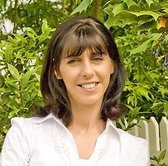
A few weeks ago, someone asked me the difference between what I had learned in Catholic school and what was taught to me by my mother and grandmothers – all involved in spiritual paths of their own.
My answer was a simple one – none. All the paths I have had the chance to personally practice have taught me that love is the gateway to a higher consciousness. Names and interpretations change, but the core teachings are fundamentally the same.
Sadly, Hollywood film makers and overzealous writers with no direct knowledge have made sure that what wasn’t already a misconception has become one. The differences among belief systems have been exploited to the point that the similarities have been overshadowed and forgotten.
Drawing from the well I’m most familiar with, I would like to explain some of the principals of Voodoo (also known as Voudoun, depending on the region), to make my point. Voodoo practitioners believe in one Creator (God). The closest essence of Spirit to God is Obatala, known for his preference of all things pure and associated to the vibrations of Jesus. Below them are the Orishas (saints), God’s helpers who lived on Earth prior to their celestial appointment.
The practice of the religion is not to be confused with Hoodoo, the “magical” practice which is sister to Voodoo. Orishas are revered on specific days of the week, usually corresponding to their elemental strength, and are petitioned to bring one’s wishes to the creator.
Although some practitioners do exploit the religion and its practice by performing ludicrous “tricks”, true practitioners work very closely with Universal laws. Deeper knowledge rarely comes without the wisdom to use it, and those who act selfishly are most often charlatans without scruples who achieve few, if any, results. Associating those low practitioners with the lot is no different than associating Jim and Tammy Baker to Christianity. A greedy low-life is going to be just that, regardless of the creed.
Compared to Christianity, Voodoo is a “hands-on” system of belief, but it still manifests itself through prayer. A candle lit for someone’s healing has the same purpose of reciting a prayer. The only difference is that the practitioner is using more senses to pray. Even the infamous voodoo dolls – the public face of Voodoo – are widely used for healing, and merely represent the person the healing energy is sent to.
The difference between Catholicism and Voodoo is the same as one child telling a story and one drawing a picture about it. Once the wish is released to God, it is understood that there may be different plans at work for that person that go beyond human will, and that knowledge is accepted and respected.
As a lady once told me, there is only one vision, and many paths to get there. What counts is the final destination.
My answer was a simple one – none. All the paths I have had the chance to personally practice have taught me that love is the gateway to a higher consciousness. Names and interpretations change, but the core teachings are fundamentally the same.
Sadly, Hollywood film makers and overzealous writers with no direct knowledge have made sure that what wasn’t already a misconception has become one. The differences among belief systems have been exploited to the point that the similarities have been overshadowed and forgotten.
Drawing from the well I’m most familiar with, I would like to explain some of the principals of Voodoo (also known as Voudoun, depending on the region), to make my point. Voodoo practitioners believe in one Creator (God). The closest essence of Spirit to God is Obatala, known for his preference of all things pure and associated to the vibrations of Jesus. Below them are the Orishas (saints), God’s helpers who lived on Earth prior to their celestial appointment.
The practice of the religion is not to be confused with Hoodoo, the “magical” practice which is sister to Voodoo. Orishas are revered on specific days of the week, usually corresponding to their elemental strength, and are petitioned to bring one’s wishes to the creator.
Although some practitioners do exploit the religion and its practice by performing ludicrous “tricks”, true practitioners work very closely with Universal laws. Deeper knowledge rarely comes without the wisdom to use it, and those who act selfishly are most often charlatans without scruples who achieve few, if any, results. Associating those low practitioners with the lot is no different than associating Jim and Tammy Baker to Christianity. A greedy low-life is going to be just that, regardless of the creed.
Compared to Christianity, Voodoo is a “hands-on” system of belief, but it still manifests itself through prayer. A candle lit for someone’s healing has the same purpose of reciting a prayer. The only difference is that the practitioner is using more senses to pray. Even the infamous voodoo dolls – the public face of Voodoo – are widely used for healing, and merely represent the person the healing energy is sent to.
The difference between Catholicism and Voodoo is the same as one child telling a story and one drawing a picture about it. Once the wish is released to God, it is understood that there may be different plans at work for that person that go beyond human will, and that knowledge is accepted and respected.
As a lady once told me, there is only one vision, and many paths to get there. What counts is the final destination.








No comments:
Post a Comment